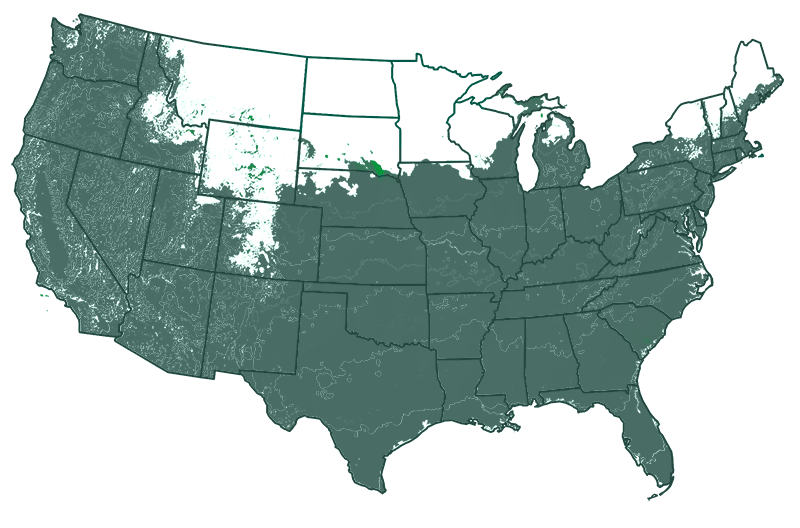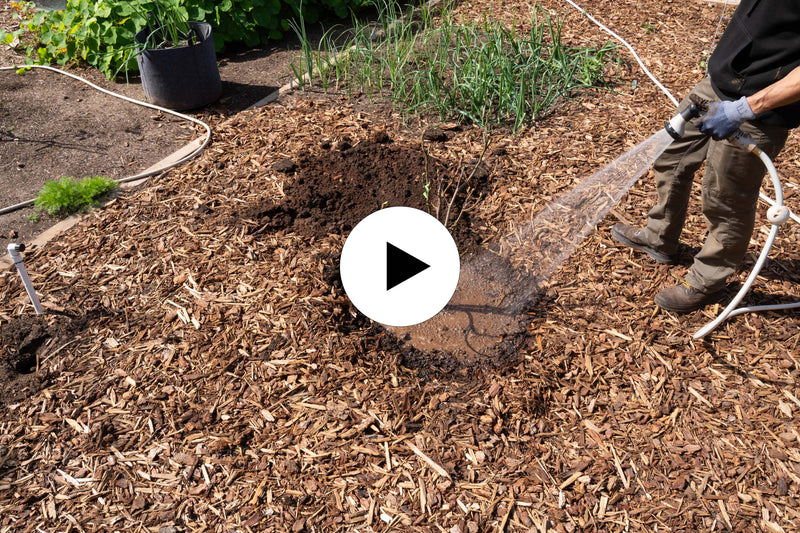

Chicago Hardy Fig Tree
View More Planting Info
Choose a location with full sun (a minimum of six hours of direct sunlight per day). This fig can handle some partial shade in warmer climates, but yield will be reduced. In cooler climates, choose a protected area away from chilly winds. The soil should be rich, well-draining, and slightly acidic. Dig a hole twice as wide and the same depth as the root ball. Place the tree in the hole, ensuring it's straight, and backfill with soil, tamping down gently to remove air pockets. Water thoroughly to settle the soil around the roots. Apply a layer of mulch around 3-4 inches thick around the base of the tree after planting to keep weeds down and regulate soil temperature.
Sunlight:
Plant in full sun, providing at least 6 to 8 hours of direct sunlight per day.
Fertilizing:
Feed annually in early spring and again in mid-summer with a balanced, slow-release fertilizer.
Pruning:
Prune in late winter to trim the tree into your desired shape and improve growth.
- Product Info
- Care and Maintenance
- Planting Care
- Growing Zone
Product Info
Mature Height: 15-30 ft.
Mature Width: 15-30 ft.
Sunlight: Full Sun
Growth Rate: Moderate
Does Not Ship To: AZ, OR
Care and Maintenance
Watering: Water around once per week after planting to establish a strong root system. Once established, these figs are considered quite drought tolerant. Water more often when planted in containers to combat quickly drying soil. The fruits are less prone to splitting than some other varieties, suitable for rainy regions.
Fertilizing: Fertilize in early spring with a balanced slow-release fertilizer and again in mid-summer if the tree looks like it needs a nutrient boost. Apply around the drip line of the tree to ensure the nutrients reach the roots.
Pruning: Prune in late winter while the tree is dormant. Trim the tree into your desired shape, keeping the size more compact in cooler regions. Remove dead or diseased branches to improve growth and airflow.
Pests and Diseases: Watch out for diseases like anthracnose or rust. Fungal diseases are common in humid areas or when there is little airflow around the branches due to a lack of pruning. Nematodes, spider mites, and fig tree borer are possible pest problems.
Pollination: Chicago Hardy Fig Trees are self-fertile, so you don’t need to plant another fig tree for a successful harvest. Purchase the Fig Pollination Pack which includes the Chicago Hardy Fig and Black Mission Fig.
Harvesting: Harvest the fruits when they turn a deep purple, with skin that is slightly soft. The fruits are quite delicate, so avoid pulling them roughly and use shears to remove them instead.
Recovery Time: Transitioning from our nursery to your home can be a bit of a shock to your plant. A short acclimation period helps it recover and reduces stress.
Climate Adjustment: Every environment is unique. Giving your plant time to adjust to the local climate, humidity, and light conditions in a shady spot will set it up for better growth and health.
How to Acclimate Your Plant: Keep the plant in its container and place it in a shady, sheltered area away from high winds. Ensure it's watered adequately – the soil should be moist but not waterlogged. Monitor the plant for any signs of distress and allow it to adjust for a few days before planting. After a few days of acclimation, your plant will be better prepared to thrive in its new home for years to come.
Planting Care
Sunlight: Plant in full sun, providing at least 6 to 8 hours of direct sunlight per day.
Pruning: Prune in late winter to trim the tree into your desired shape and improve growth.
Fertilizer: Feed annually in early spring and again in mid-summer with a balanced, slow-release fertilizer.
Growing Zone
Growing Zone 5-10

Fruit Trees & Bushes Delivered to Your Doorstep
Unpack, Plant and Grow!




